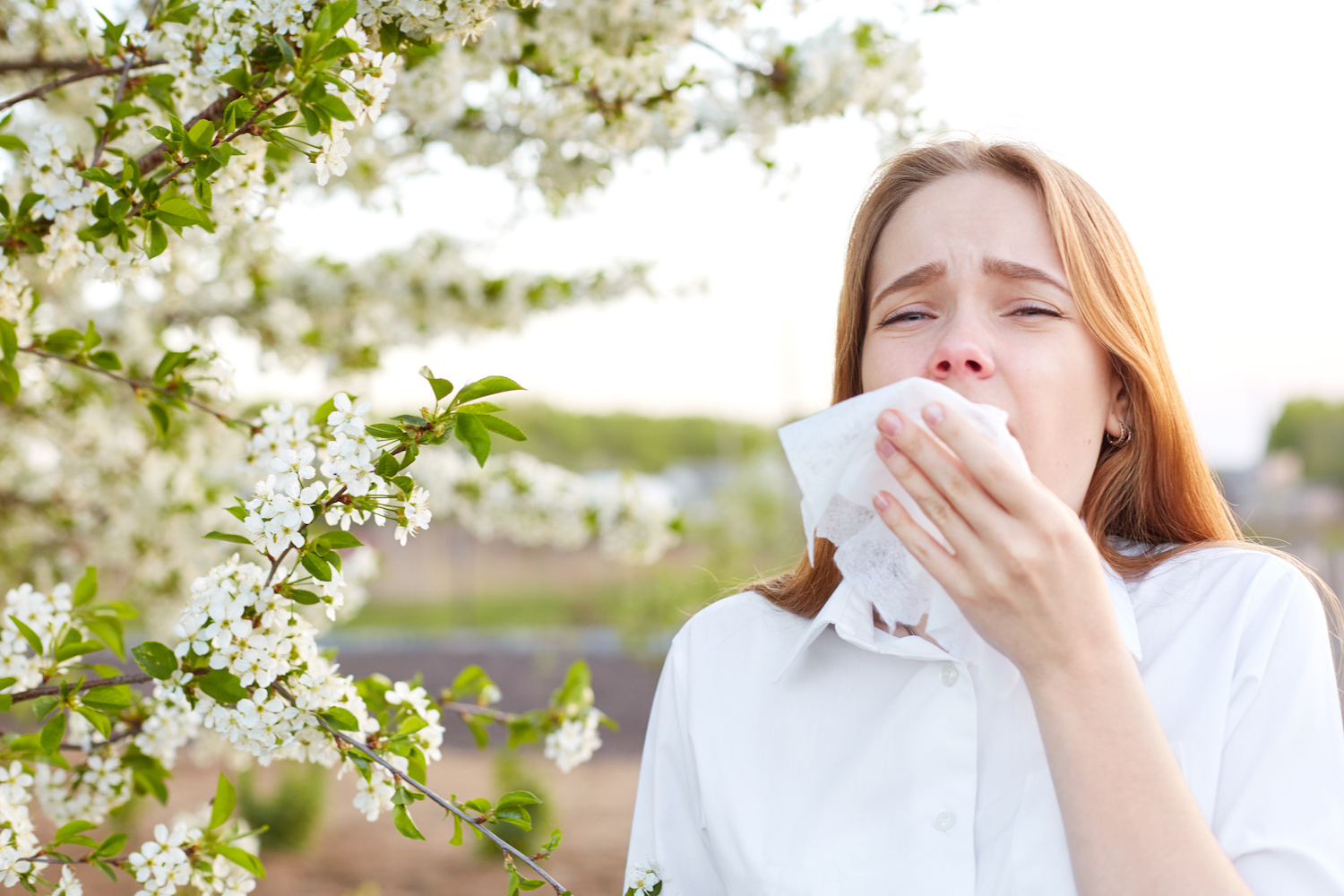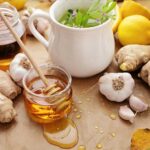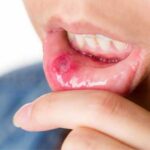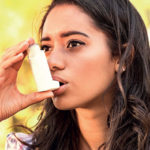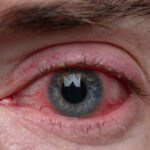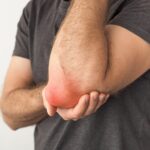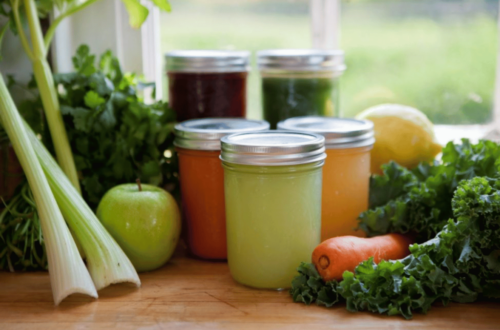Amazing Hay Fever Treatment At Home
In this article on hay fever treatment at home, the question to ask is: “why does hay fever occur?” Seasonal allergies such as hay fever are often thought to reflect seasonal changes from winter to spring.
Ayurveda is an ancient Indian comprehensive philosophy that teaches how to live a healthier and more fulfilling life by balancing the mind, body and spirit. Ayurveda recognizes that when the body warms up, it warms up, “dissolving” the build-up of congestion and toxins that have built up over the winter.
Allergic reactions such as hay fever occur when the body overreacts to a trigger or allergen, in this case pollen. Your body produces a chemical called histamine, which triggers an allergic reaction and associated symptoms.
For hay fever, pollen particles contain proteins that cause inflammation, inflammation and swelling in the nasal passages, eyes and throat. Symptoms of hay fever usually fall into one of two groups following him.
Group 1:
Sinus congestion, watery eyes, heavy mucus, itchy nose
Group 2:
Inflammation of nose and mucous membranes, redness and itching of eyes and ears, headache
Each of these two groups reflects their current state of health. This means that people prone to mucus build-up are more likely to experience watery eyes and noses, while those prone to burning, burning, and itchy skin symptoms may experience symptoms such as itchy, red eyes, ears, and ears. means that you are likely to experience throat.
Symptoms of hay fever
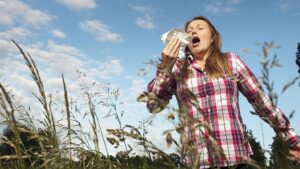
Because hay fever symptoms can be severe, people often have to resort to over-the-counter antihistamines (and sometimes stronger prescription drugs) to lessen the severity of hay fever.
While they are effective, they can also have side effects such as making you drowsy, affecting coordination, and causing blurred vision. Antihistamines that don’t cause drowsiness can cause headaches and nausea.
For this reason, many people are turning to more natural ways to reduce the symptoms of hay fever by using herbs and making dietary and lifestyle changes. Because the beneficial properties of plants take time to take effect, it is worth making these changes, including herbal intake, two to three months before the start of pollen season.
If you are prone to and highly sensitive to hay fever, consider starting in the winter before the plants bloom.
Hay Fever Treatment at Home – Herbs
Here are the top Herb Hero recommendations from herbal experts that you should incorporate into your daily routine for support. Herbs can be added to food, drunk as a tea, or taken as a dietary supplement.
Elders
On, hay fever treatment at home, Elders are traditionally called “nature’s medicine chests.” Rich in colorful pigments that act as natural antioxidants, elderberries are a natural source of vitamin C. Vitamin C plays an important role in how our immune system communicates and coordinates responses.
Elder flower is traditionally used to support the mucous membranes of the nose and throat to relieve sneezing. Take as a syrup (try Pukka Elderberry Syrup) or as an herbal tea (such as Pukka Elderberry and Echinacea Tea, which contains both Pukka Elderberry and Flowers) for calming comfort.
Aloe vera
Aloe vera can be used as hay fever treatment at home. It is native to some of the world’s driest regions and is known for its ability to effectively retain moisture. This is reflected in its long history of traditional use in Ayurveda to cool, soothe, and restore moisture to hot, irritated mucous membranes.
Consume 3-6 tablespoons daily before meals or add to juices and smoothies. Buying organic aloe vera like Pukka’s Aloe Vera Juice is key. Because it does not contain synthetic additives or chemical preservatives such as sodium benzoate that can cause allergies.
Nettle
Nettle is both nourishing and cleansing, which is why it has traditionally been used to cheer up after the winter. Recent research shows they can help. To make your own nettle tea, pick a few tender ears, pour boiling water over them, and steep for 5 minutes.
Recommended for hay fever treatment at home, it’s delicious with lemon. Spring sprouts are also rich in vitamin C. Or enjoy a cleanse blend with nettle leaves. Pukka’s Clean Greens is a combination of 11 nutritious, highly abundant botanical greens, including nettles that also help support.
Mushroom
Mushrooms are rich in beta-glucan polysaccharides, a natural substance proven to support the long-term development of the immune system through its nourishing and fortifying effects. Certain types of mushrooms, such as reishi mushrooms, shiitake mushrooms and maitake mushrooms, are particularly rich in the most potent beta-glucans.
Reishi mushroom (“immortality mushroom”), shiitake (“elixir of life”) and maitake (“king of mushrooms”) are popular mushrooms in traditional oriental cuisine. Taking this daily may help when you need extra support.
Pukka’s Daily Immune supplement contains a rich blend of organic reishi mushrooms, shiitake mushrooms and maitake mushrooms for maximum effectiveness.
Eucalyptus
Eucalyptus is a refreshing and invigorating herb traditionally used to support and relieve the respiratory system. To inhale the steam, add a few drops of essential oil to a bowl of warm water.
Or indulge in the dual-action Breeze-in blend of eucalyptus and mint. Inhaling the vaping clears the senses, while honey and ginger bring a pleasant aroma to each sip.
Chamomile
Chamomile inhalation is effective when the amount of pollen is high. Prepare a strong cup of tea in a large bowl with boiling water using 4 chamomile tea bags. Cover with a towel and let it sit for a few minutes.
Place your head over the bowl and under the towel and breathe deeply through your nose and mouth for 5 minutes. This moves the vapors to the lungs, relieving symptoms and helping to decongest.
Hay Fever Treatment at Home And Doshas
Because each of us has a different dosha (mind and body type), hay fever symptoms vary from person to person.
Vata types (or people with increased vata) are more prone to wheezing, sneezing, headaches, and dry mouth and throat. Pitta types (or those with exacerbated pitta) often experience more severe eye irritation with burning, soreness, and sore throat, which may also include fever and hives.
Kapha types (or people with increased kapha) are more likely to experience nasal congestion, runny nose, sinus infections, itching and heaviness.
Symptoms vary by dosha, so following a diet appropriate for your dosha (or dosha imbalance) can be very helpful.
Providing everyone with diet and lifestyle tips to alleviate hay fever symptoms
Drink plenty of hot water with grated fresh ginger for 3-5 days. Ginger not only supports digestion, but also the immune system, lungs and respiratory system, helping to decongest.
They prefer warm, nutritious, and easily digestible foods such as soups, grains, and leafy greens. Avoid mucus-forming substances such as dairy products, wheat and sugar.
Minimize time spent outdoors on days with high pollen counts.
Close the window when you sleep at night.
Wash your face and hands after going out.
Dry your laundry indoors on days with a lot of pollen. Flush your sinuses with a saline nasal spray at least twice a day.
Incorporating these herbs into your routine during spring preparation and during peak hay fever season can help you get ready for spring again.
Impact of Sexually Transmitted Diseases
Worst Foods for Erectile Dysfunction

A graduate of Computer Science and Information Management Technology. Diploma – Caregiving, Certificates – Dementia and Diabetes Awareness and Management. A researcher, blogger, songwriter, singer and acoustic guitarist. Born in an environment where natural talents such as healing are imparted at our natural birth. This natural talents of healing is the result of our genetic inheritance and the training from family environment.

